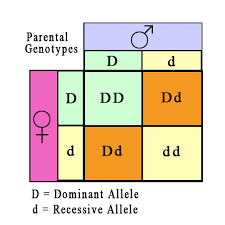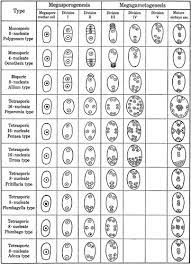skin profile (Anatomy)
SKIN ANATOMY
(PROFILE)
Introduction:
- Skin is the largest organ of the human body.
- Average adult’s skin = 8 pounds and covers 22 square feet.
- The skin has many important functions.
- We lose about 50 million skin cells a day
Divisions of the Skin:
1.
Epidermis
2.
Dermis
3. Subcutaneous
Epidermis – cuticle or scarf skin:
Epidermis protects the delicate tissues of the body from injury .Epidermis is made of soft keratin, a protein. Soft keratin is found in the epidermis as flattened cells, or dry scales. Outermost layer of the skin; sheds daily with completely new cuticle layer by 28th day; tightly packed, scale like cells; turnover slows with age. Contains no blood vessels, but has many small nerve endings. Dispute over how many layers in epidermis, between 4 - 6. Bottoms layers are sometimes classified together, known as the basal layer.
For our purposes, there are 4 main layers in epidermis.
1. Stratum corneum: horny layer; tightly packed, scale-like cells, continuously shed & replaced.
2. Stratum lucidum: clear layer; small, transparent cells through which light can pass (only on hands and feet; not present where there are hair follicles); horny zone.
3. Stratum granulosum: granular layer; cells that look like distinct granuals; these cells are dying; horny zone.
4. Stratum spinosum: basal layer - prickle cell layer; as cells undergo mitosis below, they are pushed upward into this layer; begins basal layer.
5. Stratum mucosum: basal layer - also called stratum germinativum, but stratum germinativum refers to lowest row of cells to make up basal layer; basal zone (living stratum).
6. Stratum Germinativum: basal
layer - composed of single layer of cells, lowest layer of cells to make up
living stratum or basal layer; mitosis happens here and cells begin journey to
surface, to replace older cells that are shed; approximately 28 days for
journey; pigment granules produced here (melanocytes) to give skin color.
Epidermis includes the following layers:
Germinative layer (stratum basale or stratum germinativum):
It consists of a
single layer of columnar cells arranged like a palisade; between these cells
there are slit-like spaces called intercellular bridges. Among the cells of
germinative layer localize melanocytes, which produce melanin. Skin color
straightly depends on the amount of melanin. This layer presents stem cells
conerned to mitosis.
Prickle cell layer (stratum spinosum):
It Consists of 5 - 10 rows of cells , cuboid in deep parts of
layer but become flatter gradually as they approach next layer, the granular
layer The cells of the prickle-cell layer are marked by presence of specific
tonofibrils in their cytoplasm. Special Langhan's cells are demonstrated in
this layer, which carry immunological function.
Granular layer (stratum granulosum):
it Contains 1 / 2 / 4 rows of cells elongated parallel to
epidermis It was considered previously that they were formed of a special
substance called keratohyalin The presence of the keratohyalin granules is the
first visible stage, of the beginning of the process of keratinization of the
epidermal cells. Serve as water-proof layer.
The epidermal germinative, prickle-cell, and granular layers
are sometimes embraced under the name of Malpighian layer.
Lucid layer (stratum lucidum):
It is Composed of elongated cells containing a special
protein substance which refracts light strongly This substance resembles drops
of oil and is called eleidin Besides its main component, eleidin, the stratum
lucidum contains glycogen and fatty substances (lipoids, oleic acid)
Horny layer (stratum corneum):
It is composed of
fine, anuclear keratinized elongated cells They are firmly attached to one
another and are filled with a horny substance (keratin) the chemical structure
of which has still not been finally determined It is believed that this is an
albuminoid substance poor in water and rich in sulphur and contains fats and
polysaccharides. The outer part of stratum corneum is less compact and
occasional lamina separate from the main bulk, i.e. the process of
physiological desquamation occurs
Dermis Papillary layer:
It consists of thin bundles of astructural amorphous
interstitial substance, collagen fibres & many fine elastic fibres
Reticular layer - consists of collagen bundles are more compact and thick and
intertwine into a thick network of loops The reticular and particularly the
papillary layer of normal skin have a small number of various cell elements:
fibroblasts, histiocytes, lymphocytes, mast, plasma cells & peculiar
pigment cells Hairs, glands (epithelial appendages of the skin), muscles,
vessels, nerves and nerve endings are located in the dermis
Dermis – derma or true skin:
Made of collagen and elastin (protein fibers); gives skin strength, form, flexibility. Blood vessels, fat cells, oil and sweat glands held together by collagen. Thickest layer of connective tissue; binds epidermis to subcutaneous tissue. Network of nerves, blood and lymph vessels provide nutrition to itself and epidermis. Vital functions of skin; composed of sweat and oil glands, blood & lymph vessels, nerve fibers, sensory receptors, hair follicles. Arrectorpili muscles (tiny muscles, generates heat when body is cold, contracts, causing hair to "stand up straight" on skin).Papillae (small, cone shaped projections of elastic tissue that point upward), contain nerve fiber endings for sense of touch.
Dermis – 2 layers.
1. Papillary Layer: superficial layer. Lies directly beneath epidermis. Houses nerve endings (corpuscles) that provide body with sense of touch – pain, heat, cold, pressure, touch. Contains papillae, small, cone shaped projections of elastic tissue that point upwards .Papillae contain looped capillaries or nerve fiber endings.
2. Reticular Layer: deeper layer. Contains fat cells, blood .and lymph
vessels, oil .and sweat glands, hair follicles, .arrectorpili muscles.
Subcutaneous Tissue- Fatty layer:
It attaches dermis to underlying structures. Also called
adipose, or subcutis tissue. Composed of adipose and connective tissue. Serve
as shock absorbers for vital organs, stores energy. Varies in thickness
according to age, sex, general health of individual. Gives smoothness, contour
to body, contains fats for use as energy, heat insulator. Circulation is
maintained by network of arteries, and lymphatics (removes bacteria and foreign
materials, produces antibodies to fight infection)
Functions of the Skin :
- Immunological function
- Secretory function
- Thermoregulation function
- Receptory function
- Excretory function
- Protective function
Cells of skin:
- Melanocytes
- Keratinocytes
- Langenhan cells
- Merkel’s cells





Comments